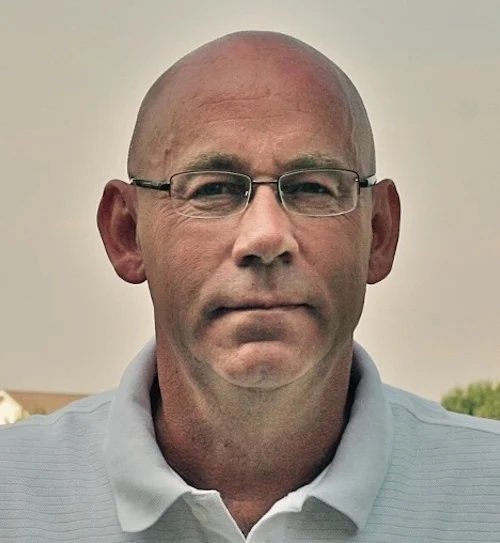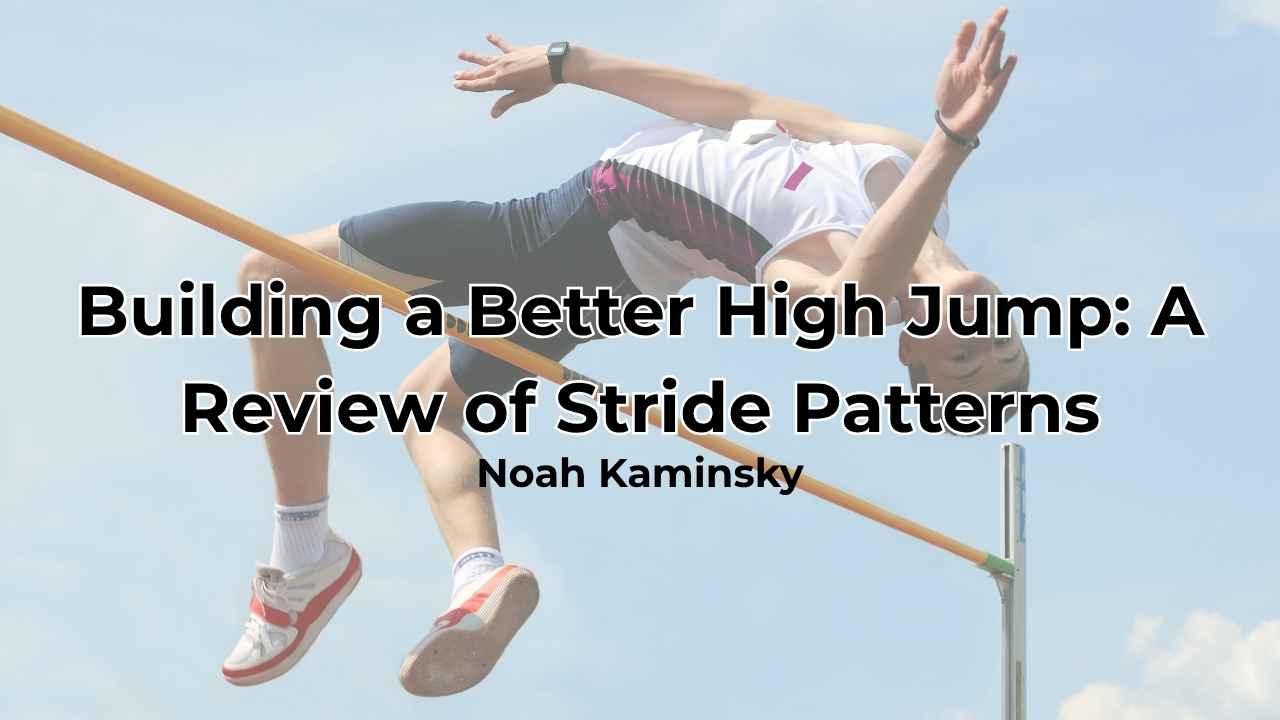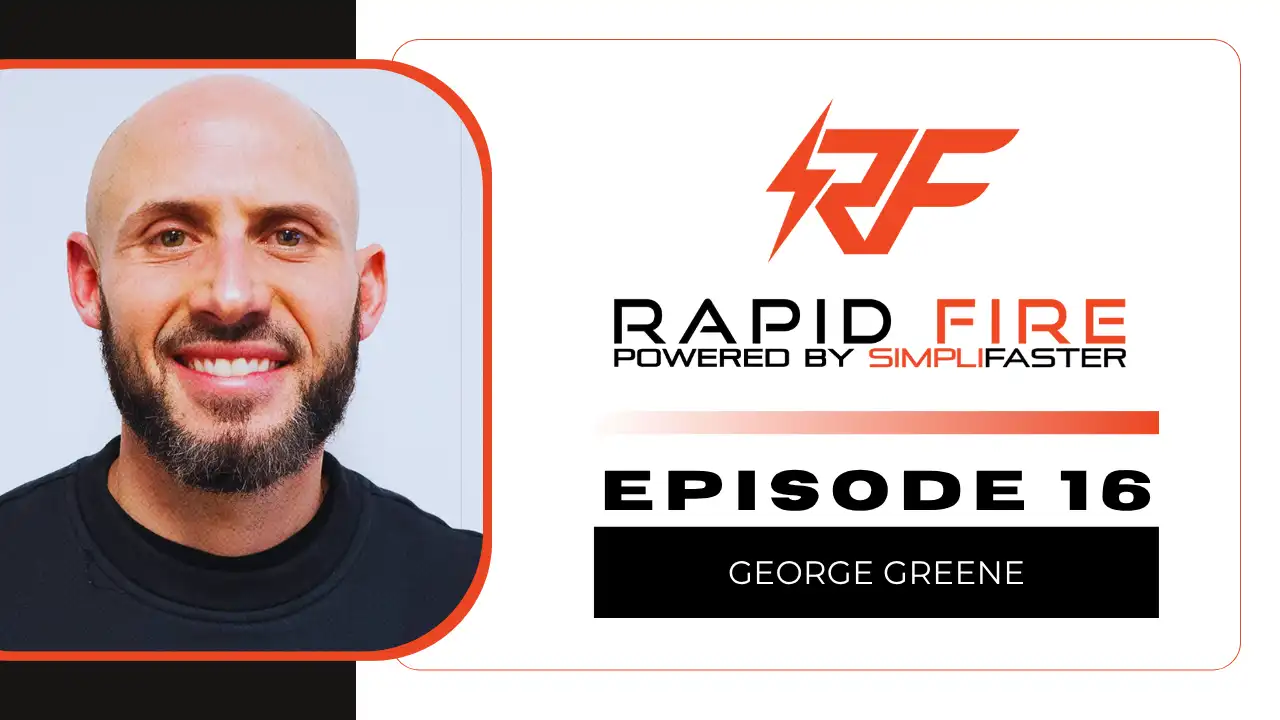[mashshare]

Sprinters in the north are no match for sprinters in the southern states. Why does Florida produce twice as many elite sprinters as Illinois? I think this speed differential has to do with sunshine and dopamine.
Dopamine is good stuff. With healthy dopamine levels, people are alert, happy, and feel an excited buzzing sensation of anticipation. I’ve had that excited buzzing sensation since listening to a Strength Power Speed podcast where Derek Hanson interviewed Pat Davidson. When I finished the 69-minute podcast, I tweeted what I had learned.
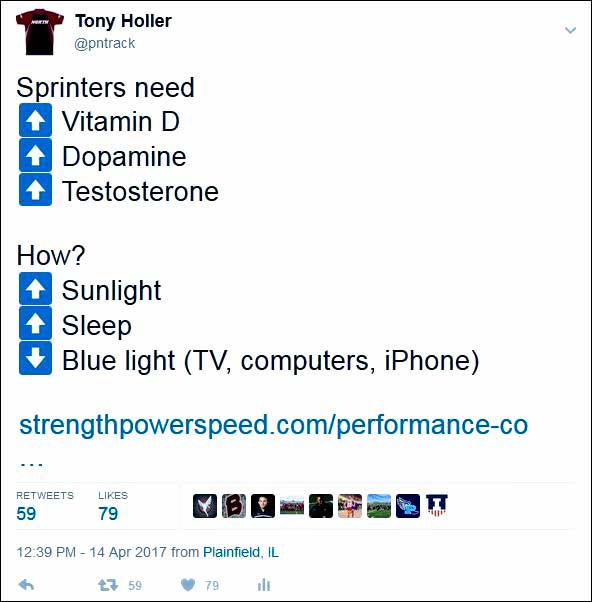
What Is Dopamine?
Dopamine is a neurotransmitter identified in the human brain in 1957. I remember my 7th grade science teacher explaining how neurons communicate. We were taught “Andy Axon sends a pass to Denny Dendrite.” The figurative football is a neurotransmitter. The space between the neurons is a synapse.
High dopamine levels provide many benefits to a sprinter including confidence, resistance to fatigue, and the ability to move fast.
High dopamine levels provide confidence, resistance to fatigue, and the ability to move fast. Share on XIn the podcast interview, Pat Davidson said, “Excessive dopamine can make you a lunatic; you can be crazy and psychotic if your dopamine levels are too high. I don’t know if that’s the worst thing in the world for athletes. Having an unrealistic belief in the supernatural and feeling as though they have powers that are excessive; that’s not the worst thing if I want a highly competitive person who thinks they can dominate and do things no one has ever done before. So, I might want excessively high dopamine levels. I don’t think I have a problem with that.”
Dopamine declines naturally from the age of 20 until the age of 80. I remember my excessive dopamine days very well. I was a confident risk-taker, feeling the invincibility of youth. As Pat Davidson said, “I don’t know if that’s so bad.” At the age of 58, I am realistic, well aware of my mortality, and I avoid risk. I thought it was maturity, but maybe it’s the dopamine.
Accomplishments make people feel good. Dopamine levels increase when we are rewarded. We like the way we feel so we seek more rewards. Yes, winning increases dopamine and then fuels the urge to win again. Success breeds success.
Winning increases dopamine and then fuels the urge to win again. Share on XIn Pat Davidson’s article for SimpliFaster, Central Fatigue, and the Role of Neurotransmitters on Reduced Work Output, he cited a 2008 study stating, “Enhanced dopamine levels will provide an increase in psychological motivation to work harder in a more stressful environment.”
Dopamine does more than affect your psyche. With increased dopamine, we experience an increased excitatory effect on our motor neurons and an accelerated velocity of limb movement. Not the worst thing in the world for sprinters.
How Do You Increase Dopamine Levels?
Actions
- Sleep, Sleep, Sleep. Nothing you do will improve dopamine levels more than sleep.
- Sunshine. Minimum exposure to sunlight should be 30-60 minutes, but the more, the better. Sunlight also increases the skin’s production of vitamin D, boosts testosterone levels, and improves the ability to sleep. We evolved for 35 thousand years living in the natural light. Too many people now spend their lives in artificial light.
- Meditation
- Massage
- Avoid junk food, especially sugar.
- Avoid excessive caffeine, including energy drinks.
- Limit exposure to blue light (bright screens including cell phones, computers, and televisions).
- Limit fluorescent light (go outside!).
- Avoid anything that provides instant gratification without effort or discipline. Instant gratification causes an initial spike in dopamine followed by a crash. Addictive substances like cocaine, nicotine, and alcohol spike and crash dopamine levels. Even behavioral addictions like gambling and pornography spike dopamine levels for the short term but have a negative long-term effect.
Nutrients
- Vitamin D
- Magnesium
- L-Tyrosine from natural foods including nuts, poultry, and fatty fish containing omega-3 oils (L-Tyrosine is the precursor of dopamine)
- L-Tyrosine supplements, 800-1,500 mg daily
- Vitamin B-6 (helps conversion of L-Tyrosine to dopamine)
- L-Phenylalanine supplements, 1000-1,500 mg daily (L-Phenylalanine is the precursor to L-Tyrosine)
- Fish oil or krill oil (omega-3 fatty acids) supplements
Medications
- Banned performance enhancing drugs like Adderall and Provigil (Modafinil); I once read about an athlete who broke a national record in practice while taking Modafinil.
If nothing else, remember that sleep and sunshine are critical to maximize dopamine levels.
Do Sprinters Thrive in Sunshine?
Which states are best in high school track and field? The sunshine states. High schools in California, Texas, Florida, and Georgia dominate the national track and field rankings. Northern states like Illinois, New York, Pennsylvania, and Ohio are the second class citizens of the track and field world.
When northern coaches are asked why the sunshine states are so successful in track, their answers seldom mention sunshine. Their reasons include the following:
- Better weather allows for more effective training.
- California, Texas, Florida, and Georgia have more African-American athletes.
- California, Texas, Florida, and Georgia have better facilities.
There’s no question that practices are better under sunny blue skies, but many northern schools have indoor facilities. My high school has a 178-meter indoor track (nine laps to a mile). We have six lanes on the straightaway and four lanes around the track. We can host indoor meets, and our official track season is 19 weeks long.
There’s no argument, good weather is advantageous for training, but that’s assuming training is the key to elite performance. Egocentric coaches think dominant athletes achieve greatness from hard work and intelligent training. Enlightened coaches understand training is only a piece of the puzzle, and possibly a small piece. Training is overrated—important but overrated.
Is track more successful in states with higher African-American populations? At first glance, maybe. Based on the 2010 census, 11.4 million African Americans lived in the four biggest sunshine states (California, Texas, Florida, and Georgia). The four biggest northern states (Illinois, New York, Pennsylvania, and Ohio) had 7.8 million. However, the percentage of African Americans living in the northern states (14%) was greater than the percentage in the sunshine states (12%).
Equal numbers of African Americans (3.1 million) lived in both New York and Georgia in 2010. Based on 2016 track and field performances, Georgia dominates New York, especially in the speed events. What makes Georgia so much faster than New York?
There are no stats on track facilities from state to state. My impression is that Illinois track facilities are better than track facilities in Florida. I have no empirical proof to back up my opinion, but I’m sticking to it.
Speed, Endurance, and Strength
In my research, I went to Athletic.Net, a site ranks every athlete’s best performance from every state. I researched one sprint event (100 meters), one endurance event (1,600 meters), and one strength event (shot put).
Sprint Event
In the 100 meters, I found what I expected. The sunshine states dominated the northern states, producing nearly five times the number of sub 10.80 sprinters.
In the 100 meters, the sunshine states dominated the northern states. Share on XThe sunshine states had 771 boys running sub 11.00. In contrast, the cloudy states had only 195. The numbers running sub 10.80 were 294 to 60. The four sunshine states have a combined population of 95.6 million compared to only 56.8 million in the four northern states. The population advantage of 68% does not explain the 395% superiority in sub 11.00 sprinters and 490% superiority in sub 10.80 sprinters.
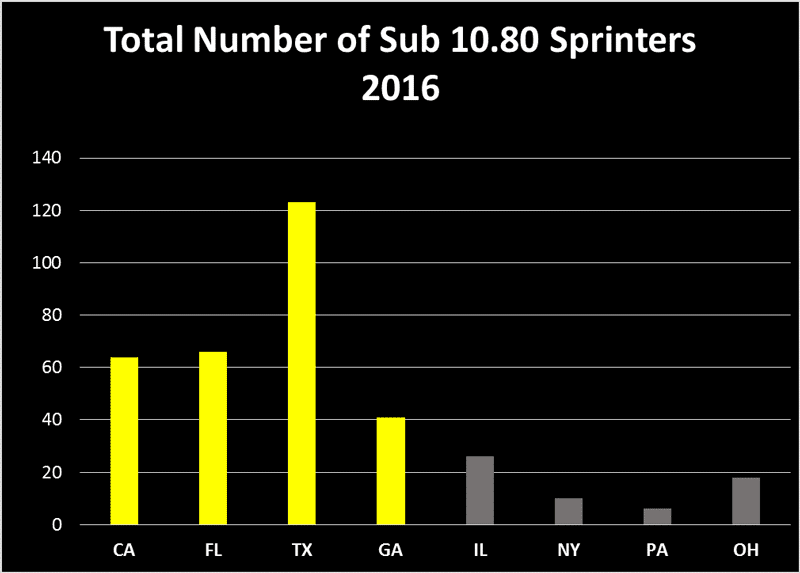
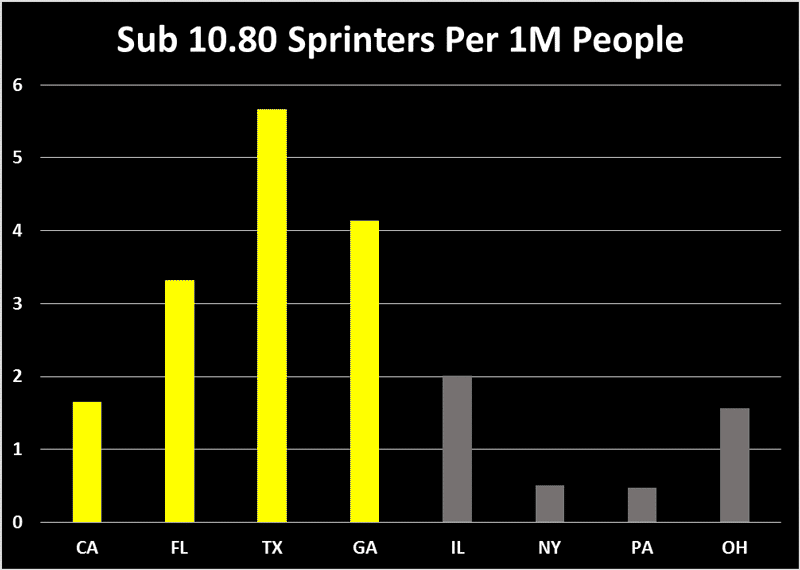
Endurance Event
After finding what I expected to find in the sprint event, I was surprised by what I found in the 1,600-meter endurance event. The sunshine states, per capita, are no different than the cold, cloudy, rainy north, where distance runners do months of training in the ice and snow. The sunshine states had 170 sub-4:20 milers, the northern states a respectable 103. The 65% more sub-4:20 milers reflect the 68% population advantage.
What? Is good weather training only important to the speed events? Is sunshine more important to sprinters than milers?
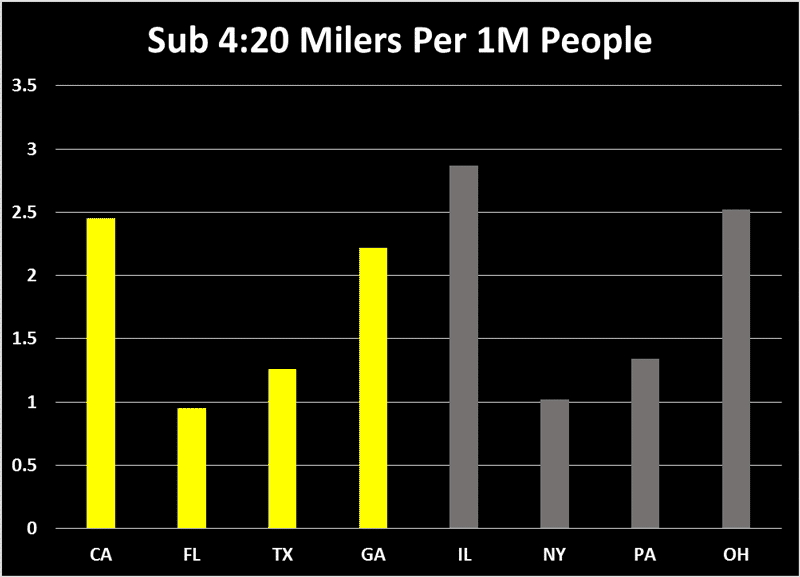
Strength Event
So what about the shot put? California, Florida, Texas, and Georgia had 87 shot putters who achieved marks over 55’0” while the north had 76. This 14% advantage is negated by the 68% population advantage.
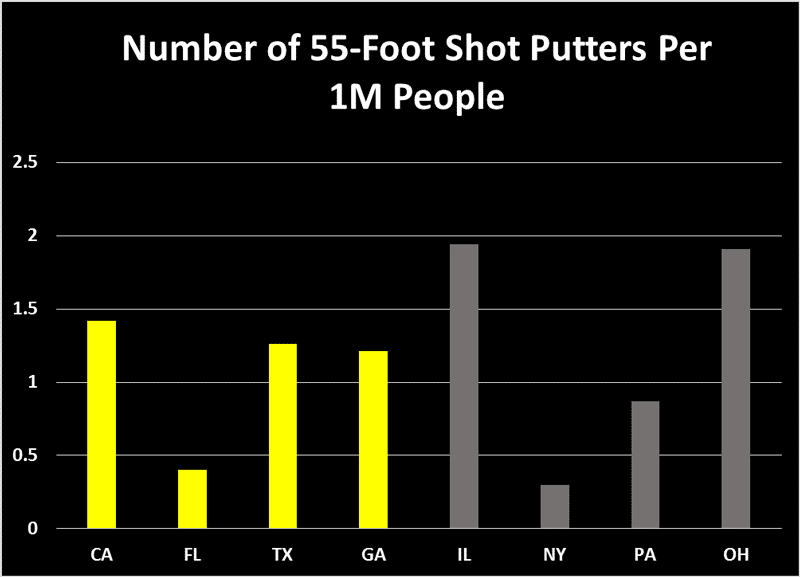
Let’s recap.
- Track athletes in the sunshine states are fast, really fast. Sprinters in the north are no match for sprinters in California, Florida, Texas, and Georgia.
- Endurance runners are essentially equal in good weather and bad weather.
- Shot putters training in cold-weather states are as good, if not better than, shot putters who throw in the sunshine.
How can Florida produce twice as many elite sprinters as Illinois, while Illinois produces twice as many elite distance runners and throwers? Track and field is considered superior in Texas, yet their only advantage is in the speed events. How can California have seven times more people than snow-covered Wisconsin but only produce twice as many elite shot putters?
I believe the answer is sunshine and dopamine.
Marcellus Moore
I have a sprinter on my track team named Marcellus Moore. Marcellus finished the indoor season ranked IL #1 in the 60 meters and the 200 meters, running 6.86 and 22.13 respectively. These numbers are incredible considering Marcellus is only a freshman who won’t turn 15 until June 30th. When I think of age 14, I think of an eighth grader.
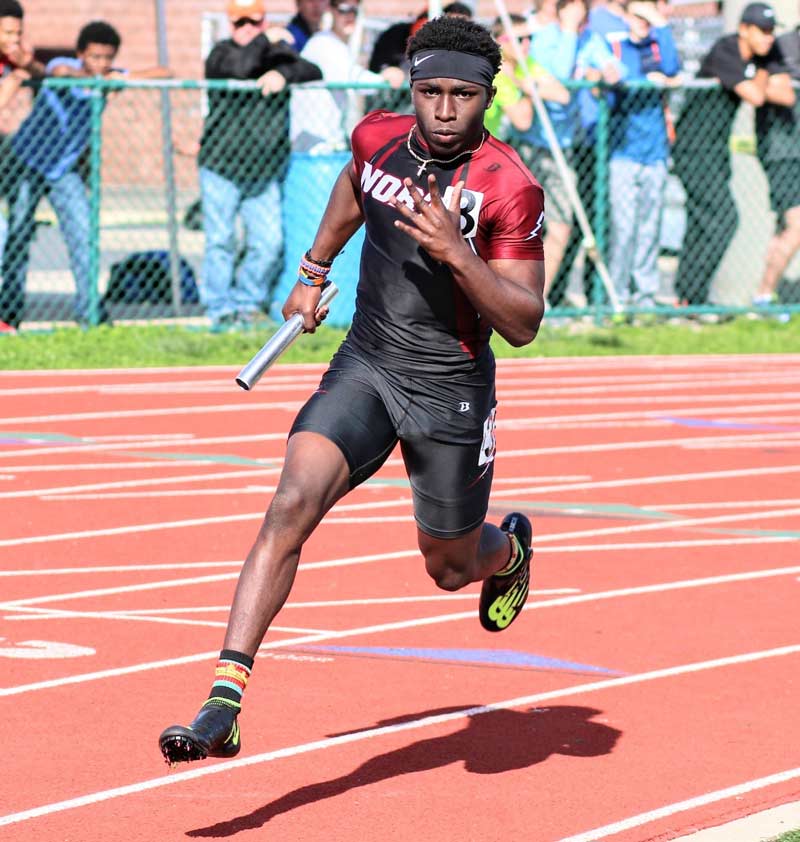
Our school has spring break between the indoor and outdoor track seasons. This year, our spring break lasted 12 days. We usually give sprinters the entire week off since track season is 19 weeks long. Because the break was longer than usual, we practiced on days 10, 11, and 12. Our practices were low-volume and totally alactic. Before the break, I warned Marcellus not to spend his spring vacation doing massive workouts. I explained that he needed rest, recovery, and growth—not hard work.
With a big smile, Marcellus replied, “Don’t worry coach, my family is going on a seven-day cruise.” Marcellus returned from his cruise, practiced three times, and then traveled four hours to the first outdoor track meet of his high school career.
He won both sprints and broke both of Plainfield North’s sprint records, shocking the track and field world with times of 10.55 and 21.28 in the 100 and 200, respectively. Good times for a kid who could be an eighth grader.
Was it the rest, recovery, and growth that produced these elite times?
Was it the low-volume, high-intensity training at our three practices?
Or was it the Caribbean sunshine?
Since you’re here…
…we have a small favor to ask. More people are reading SimpliFaster than ever, and each week we bring you compelling content from coaches, sport scientists, and physiotherapists who are devoted to building better athletes. Please take a moment to share the articles on social media, engage the authors with questions and comments below, and link to articles when appropriate if you have a blog or participate on forums of related topics. — SF
[mashshare]

